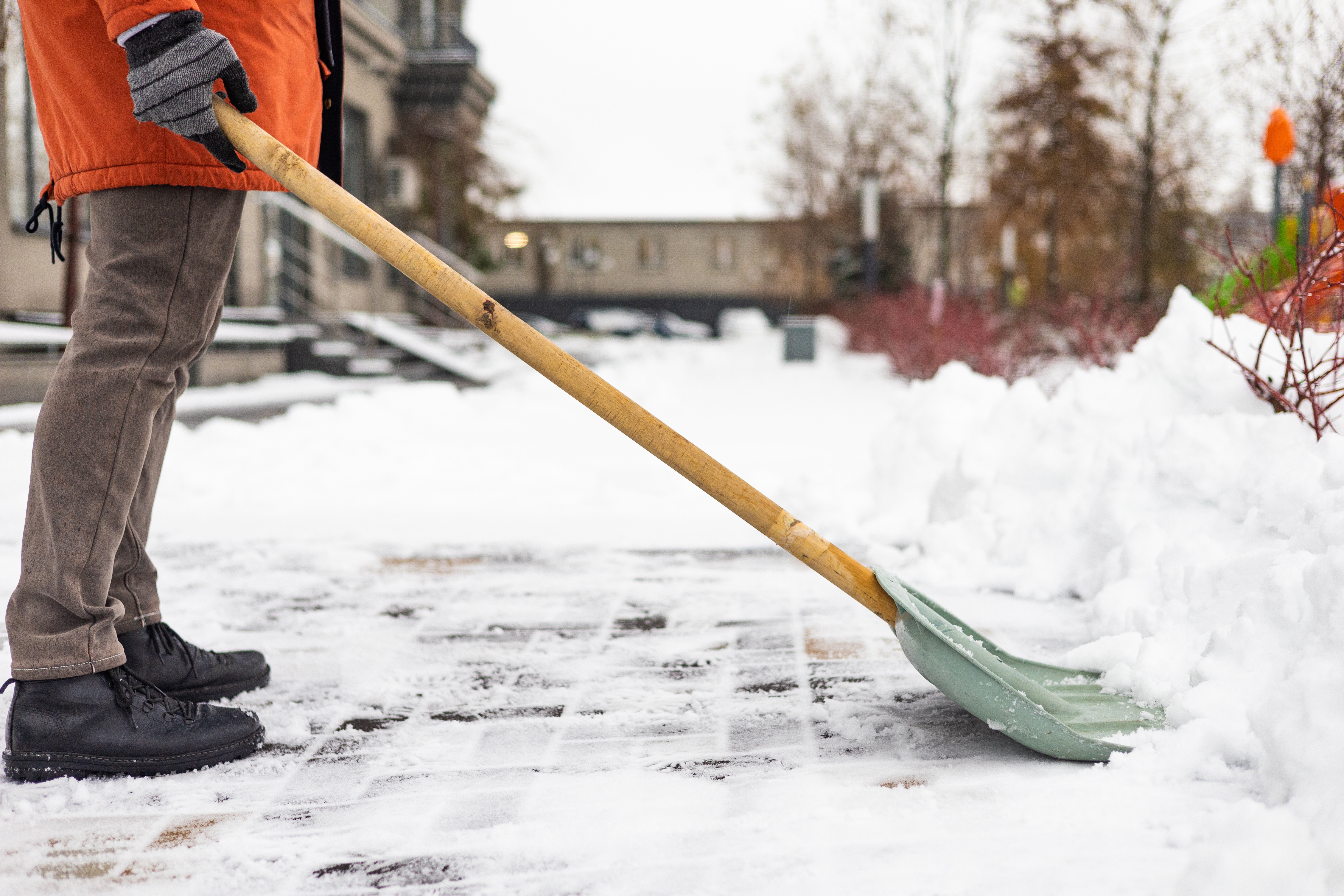Communications Best Practices in Snow Storms

Lee-Or Scarlat
Senior Analyst at Zencity
Executive Summary
- Local governments whose official channels drove discussions on snow storms saw higher positive sentiment in their discourse and few expressions of dismay. In contrast, local governments who relied more heavily on unofficial sources saw decreased resident satisfaction.
- During snow storms, residents respond well to official messaging, which thanks Snow Crews and shares data on their progress. They also interact positively with posts soliciting volunteers to aid in snow shoveling for seniors and residents with disabilities.
- Data shows that a certain level of dissatisfaction is inevitable and is mostly due to wait times for snow removal services and requirements for sidewalk snow clearing.
- Communication risks may be mitigated through early and consistent messaging. For the best results, address affected communities directly, share real-time snow fleet tracking or plowing routes, and communicate compassionately about your municipality’s policies.
Introduction
In order to assist Zencity’s partner communities in their effort to generate satisfaction and garner residents’ buy-in throughout snow operations, Zencity has leveraged thousands of data points from 171 US cities and Counties. In-depth analysis of data ranging from small towns to major cities and counties led to the development of empirically-based network lessons aimed at addressing effective communication strategies during snow storms.
Using the aggregated analysis, alongside select examples from the discourse, we hope to assist Zencity partners in crafting precise and proactive messaging during snow storms.
Included in this report are data collected between November 1, 2021–December 1, 2023.
Methodology
-
The report offers an analysis of data collected from social media and local news outlets. As such, it reflects the interest and sentiment expressed by residents using these platforms.
-
The analysis does not include sentiments and opinions expressed on private social media discussion boards and groups— only those expressed in fully public forums.
-
The Zencity interaction count consists of all social media engagements (posts, tweets, likes, comments, shares, retweets, etc.). Therefore, the number of interactions reflects the volume of discourse and the level of interest among residents expressing their views online.
-
Our machine-learning algorithm classifies large amounts of interactions according to topic and sentiment — positive, negative, or neutral — which indicate satisfaction or dissatisfaction levels about local issues, including those not initiated by the City. This model enables us to measure the interest that specific issues attract and understand how community members perceive these issues.

Discourse Overview
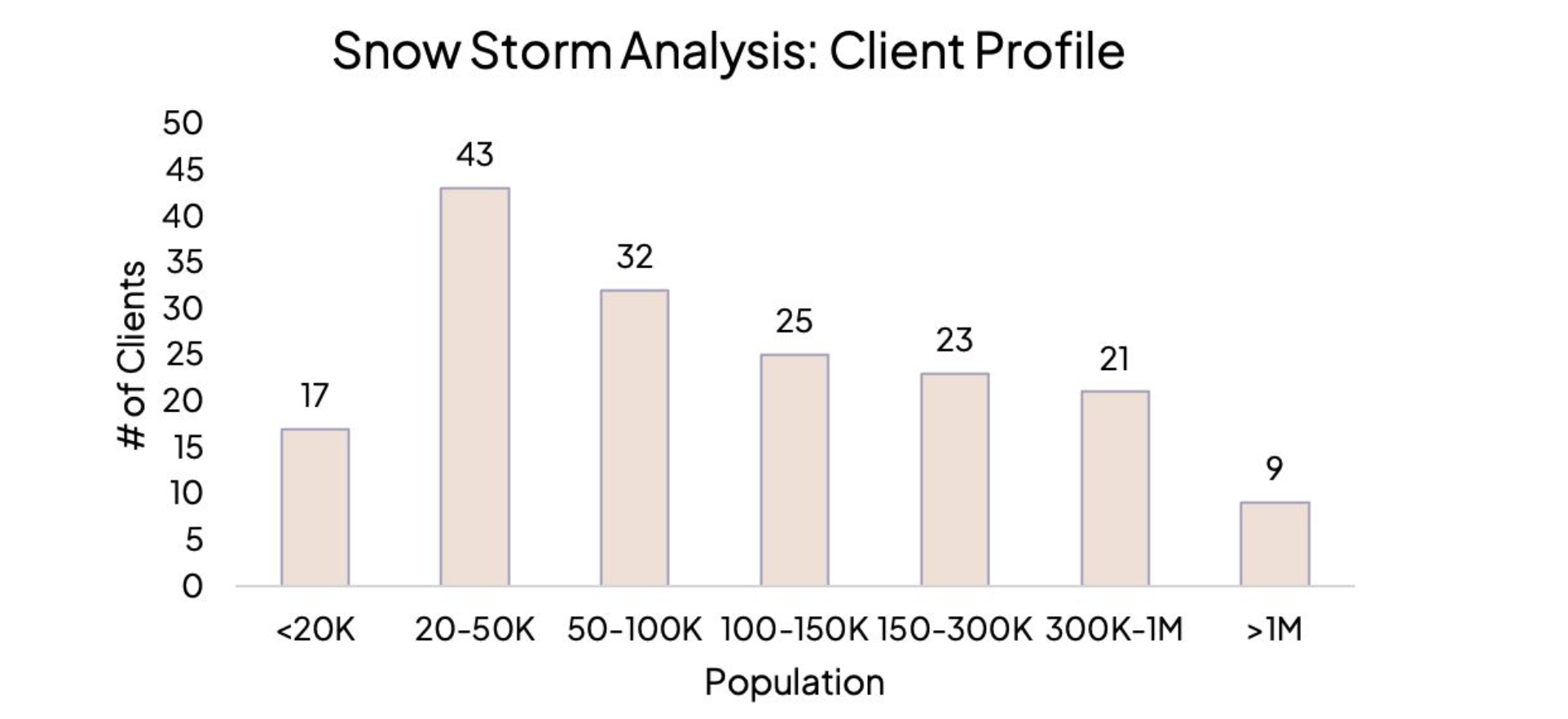
On average, one-quarter of snowstorm discourse was prompted by official channels (including Public Safety pages). The remaining three-quarters were driven by news outlets, community pages, and non-governmental organizations.
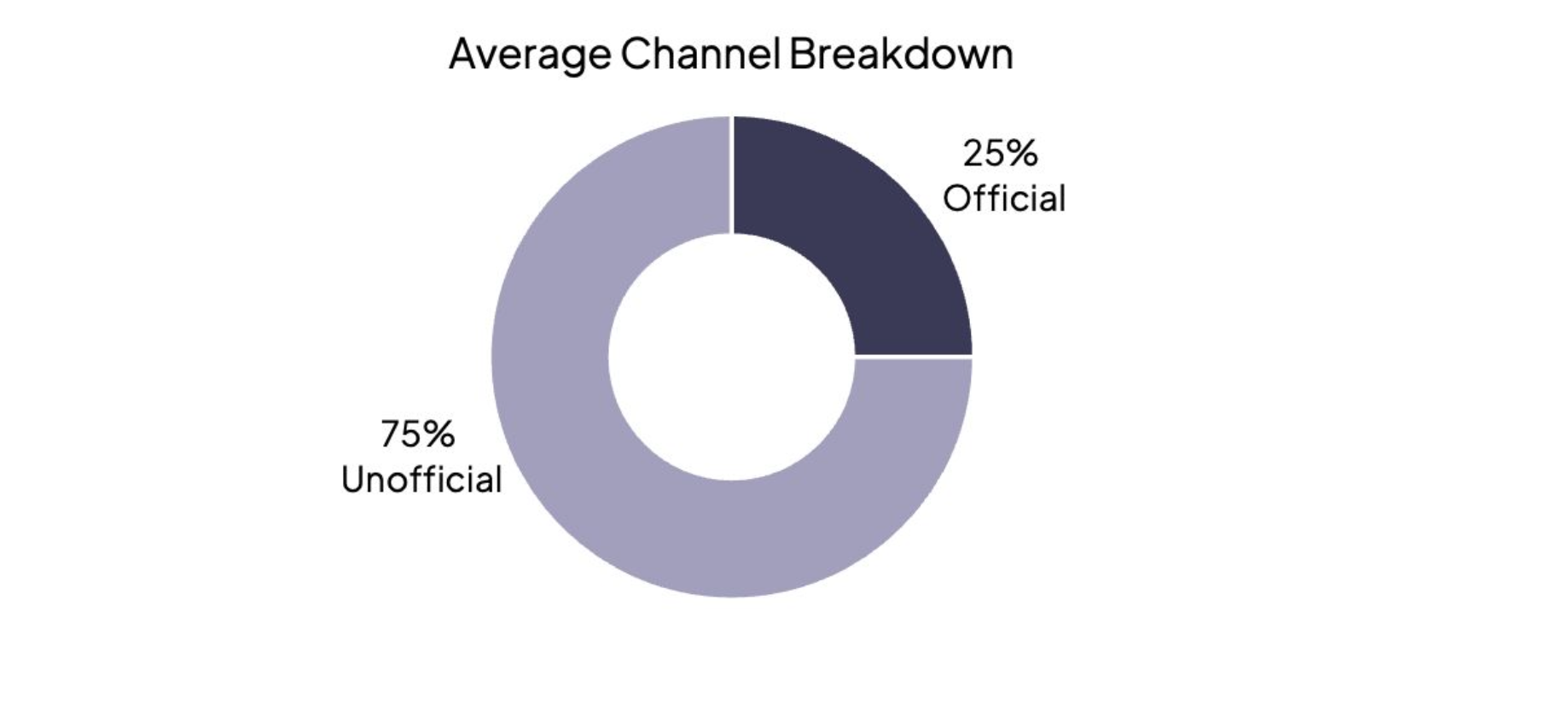
Drivers of Satisfaction:
Zencity utilized aggregated data to extract the most significant drivers of satisfaction in online discourse about snow storms. Such data informed the following top-line recommendations for eliciting positivity:
1. Lead the discourse in your community by posting consistent and centralized messaging
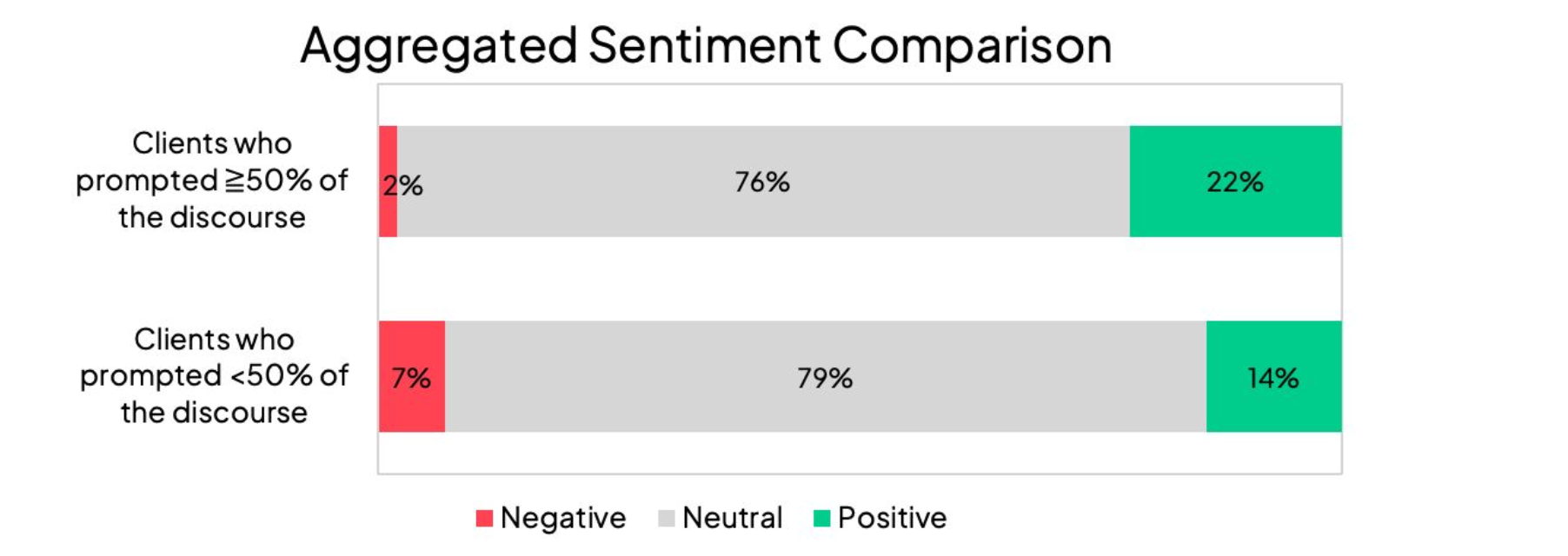
The analysis found that local governments whose official channels prompted a majority of the discourse about snow storms saw much higher positive sentiment (22%) and minimal dismay (2% negative sentiment). In contrast, local governments who relied on unofficial sources to distribute information saw lower positive sentiment and greater pushback online. In order to increase your influence on community discourse, provide consistent and frequent updates to residents before, during, and after snow events. Make sure to tell residents where to find critical updates regarding public safety, road closures, plowing schedules, and snow shoveling requirements.

An investigation into the drivers of positive sentiment found that official posts thanking snow crews and promoting snow shoveling volunteer programs elicited much higher-than-average positive sentiment.
2. Share appreciation for snow crews and data on their progress
Posts thanking snow crews were the most common and most effective communication strategy for eliciting positive sentiment online. These posts garnered much higher positive sentiment than the average post about snow storms (37% and 21%, respectively). Online users also responded very positively to posts sharing data about crews’ progress, including the number of streets plowed, the number of hours worked, and the number of homes serviced for wellness checks.
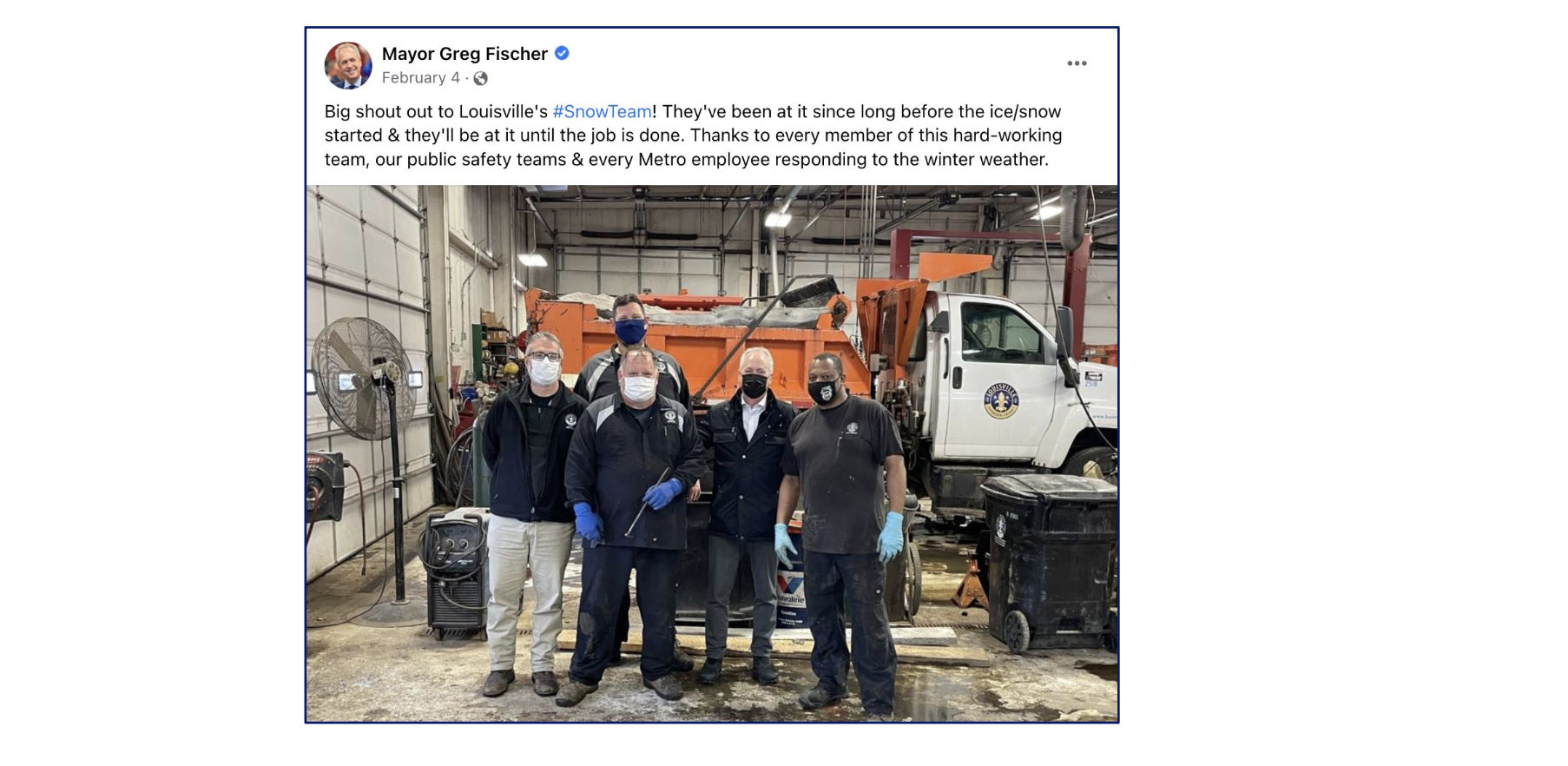
3. Consider programs to support resident snow removal, like volunteer shoveling programs
In response to snow emergencies and snow shoveling requirements, residents often expressed concern for seniors and people with disabilities. To promote equity and assist your residents for a number of reasons like childcare, age, disability, and socioeconomic status, you can assist by providing discounted services with private vendors, volunteer shoveling programs, and applications for leniency on local code enforcement of clearing sidewalks. Snow shoveling volunteer programs, in particular, allow residents to formally take part in a municipal process, therefore increasing the community’s sense of agency and resilience.
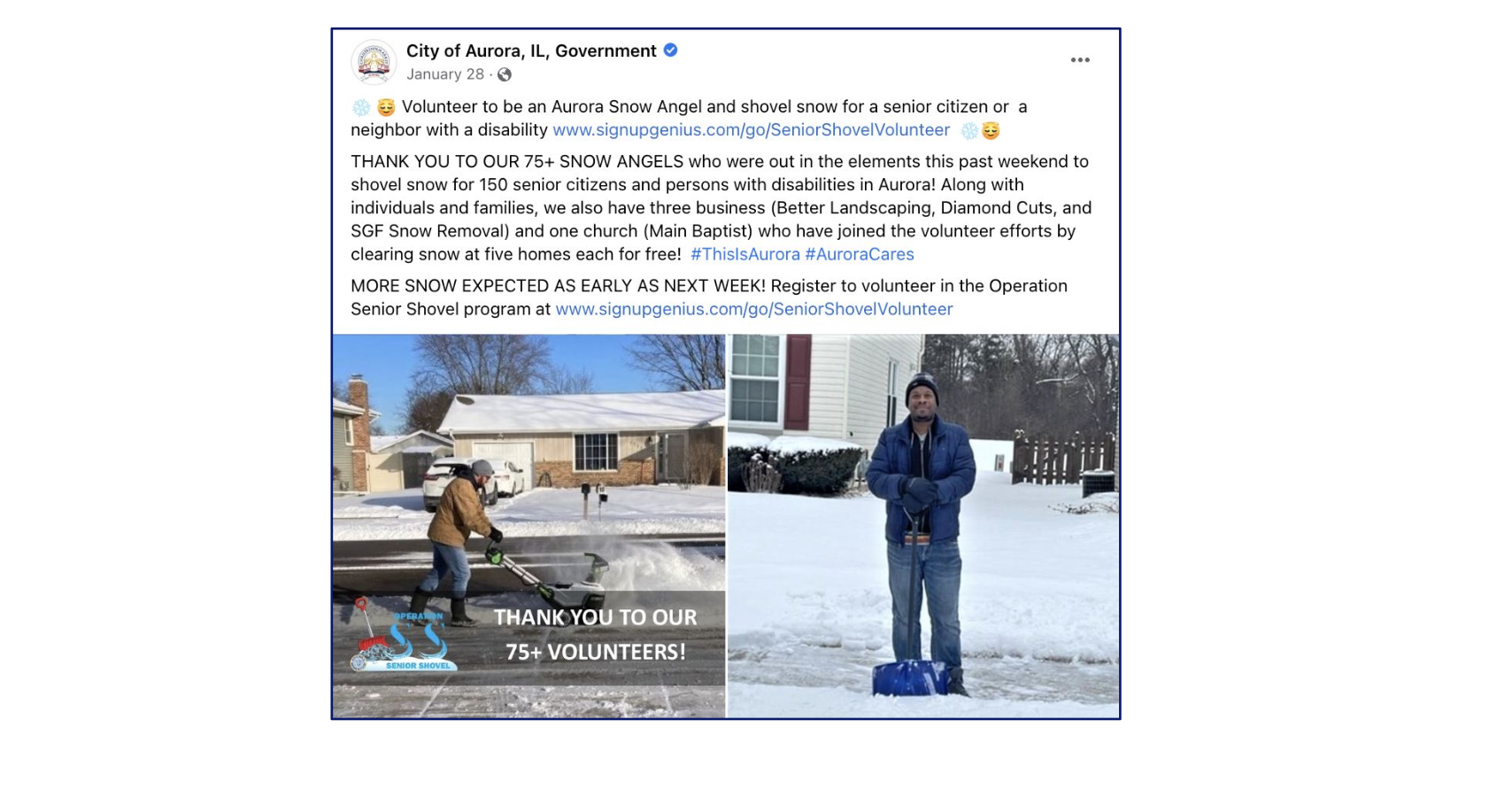
Drivers of Dissatisfaction: Mitigation Strategies
1. Residents waiting for snow plowing in their area
Official messaging about snow storms was most often met with anecdotal complaints from residents about a lack of snow plowing in their area.
Dismay about snow plowing service is driven by residents’ expectation of a local government to be responsive to their needs. During snow storms, residents will often utilize social media and/or 311 services to report that their street has not been plowed. Frustration builds when residents feel that their government is unresponsive to these reports.
Mitigation strategies:
-
Address specific communities directly: If areas of the community have not been serviced by snow fleets or public works crews, communicate with them directly. Provide a more personalized, localized message. Communicating openly about gaps in service generates more trust with residents online.
-
Share real-time snow fleet tracking or plowing routes: Launching a snowplow tracker has become a common and important practice amongst municipalities. If residents know that their government is planning to service their area, it sets accurate expectations and mitigates dissatisfaction. In the absence of real-time snow fleet tracking, municipalities can share updated plowing routes.
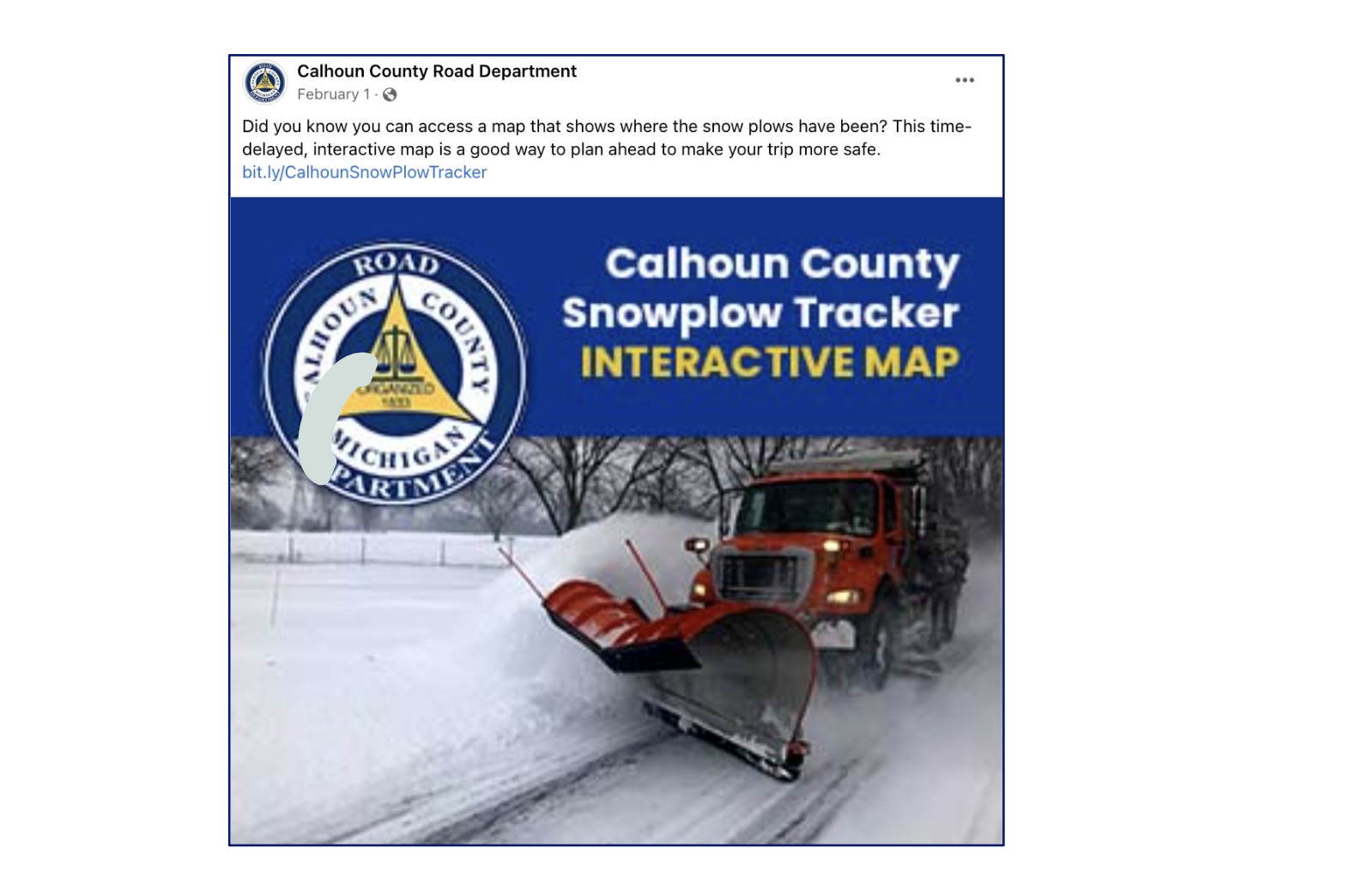
2. Frustration over sidewalk snow-clearing requirements
Dismay about snow clearing requirements is likely driven by residents’ desire for equity and fairness. Very often, residents feel it is unfair to ask of them to clear their sidewalks if the City or County itself is allegedly inconsistent in clearing snow.
Mitigation strategies:
-
Communicate early and message compassionately: Dismay about snow clearing requirements was particularly high when residents felt that they were informed last-minute about city policies. It may be advisable to communicate about sidewalk clearing requirements before major storms hit the area. Messaging around residents’ responsibilities during snow storms should be phrased compassionately and promote “neighborly behavior.”
-
Partner with news outlets and community groups to spread the word: Collaborate with local media, neighborhood groups, chamber of commerce, and other influential community groups in order to increase public education about snow clearing standards.
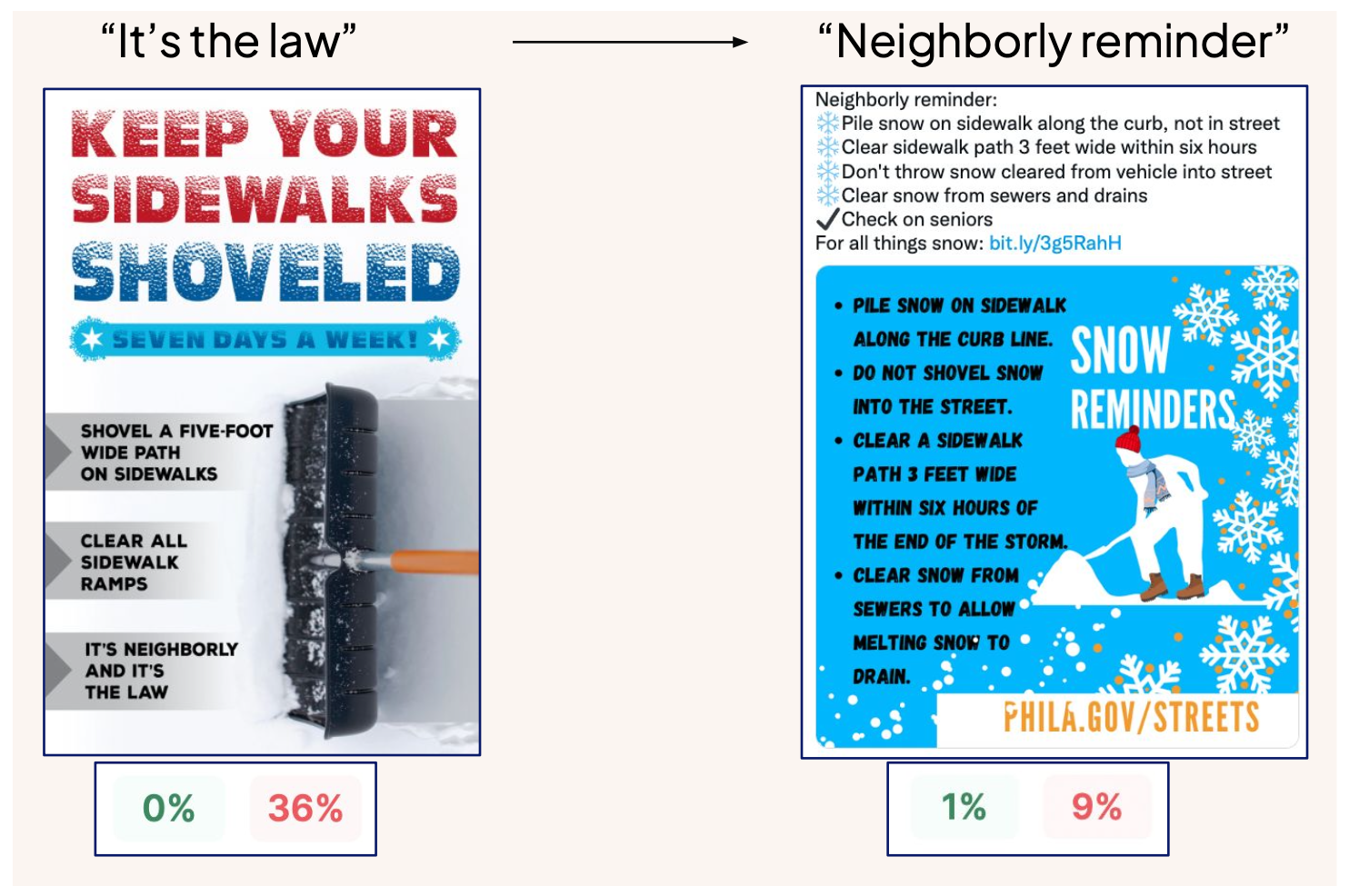
Messaging including phrases like “it’s the law” often elicits frustration directed at the City for failing to clear sidewalks on public property. Popular responses from residents include: “Why does the City disobey the law, but private landowners have to abide.” Commenters tend to point out public spaces that have not been cleared of snow (parks, sidewalks surrounding public schools and bridges, etc.). Alternatively, municipalities can implement messaging framing these requirements as a “neighborly reminder.” Such messaging may elicit complaints or 311 entries about neighbors who have not “done their part,” yet generally garners less dissatisfaction with the City itself.
Conclusion and Takeaways
This report utilizes aggregated data across 171 municipalities in North America to unveil insights about building trust, strengthening resident satisfaction, and mitigating disdain during snow events and in their aftermath. Top-line takeaways from the data include:
-
Local governments whose official channels drove discussions on snow storms saw higher positive sentiment in their discourse and few expressions of dismay. In contrast, local governments who relied more heavily on unofficial sources saw decreased resident satisfaction.
-
During snow storms, residents respond well to official messaging, which thanks Snow Crews and shares data on their progress. They also interact positively with posts soliciting volunteers to aid in snow shoveling for seniors and residents with disabilities.
-
Data shows that a certain level of dissatisfaction is inevitable and is mostly due to wait times for snow removal services and requirements for sidewalk snow clearing.
-
Communication risks may be mitigated through early and consistent messaging. For the best results, address affected communities directly, share real-time snow fleet tracking or plowing routes, and communicate compassionately about your municipality’s policies.
%20copy-1.png?width=544&height=120&name=Logo_black%20(1)%20copy-1.png)



